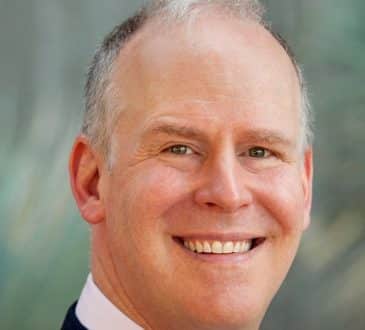3 Simple Steps to Creating a High-Performing Intergenerational Team

What motivates young employees versus their more seasoned counterparts isn’t all that different. From Generation Z to Baby Boomers, people want to be valued; they also want to trust and be trusted. This means functioning in an environment where silos, gossip, and demeaning behavior aren’t welcome.
This isn’t to say the workforce overall looks the same, not even when compared to a few years ago. More people are working remotely, and even more want greater flexibility from their employers. A Deloitte survey found that two-thirds of Millennials work at organizations with flexible arrangements, which includes everything from setting their own hours to choosing work assignments — within certain parameters, of course.
It’s not the amenities you offer employees that make a high-performance work environment, nor is it your investment in the latest tech. It’s how people genuinely feel about the workplace. That’s the biggest differentiator. Feeling valued gets people excited about going to work and being at work; it ramps up their creativity and serves as the incubator for great ideas.
Instead of focusing solely on what separates each generation from the next, look to the commonalities. It all comes down to how people feel about those they interact with every day. If you can get that right, you’ll create an environment where other great, motivated, and intelligent people are excited to come to work.
Age Is Just a Number
Creating an intergenerational team doesn’t mean you ignore generational differences. When my company worked with CEO Aviva Leebow Wolmer at Pacesetter, she initially had some doubts about the work/life balance Millennials craved. The age group accounts for about a third of the company, so her approach was to engage in meaningful conversations with her Millennial associates. She found that some of her perceptions had basis, while others simply didn’t exist.
For one, many individuals from this generation experienced what their parents called “quality time instead of quantity time.” Millennials know firsthand both quantity and quality time are needed to achieve positive balance outside of work. Thus, the lead initiative was to provide six days each year for volunteering outside the office as well as unlimited paid time off. (Yes, you read that right.)
A more traditional employer would perceive these changes as too costly or risky. But Pacesetter’s results include improved job satisfaction and associate retention, with no increase in cost. Leebow Wolmer’s willingness to embrace change (combined with her openness to learning more about this generation) ultimately wove young people into the fabric of the company.
How you go about creating an environment where all generations can succeed will vary by company, field, and industry. But it often starts with the following.
- Challenge your assumptions. Instead of assuming people on your team — regardless of age or tenure — don’t want to take on a last-minute project or don’t care about their work, change your mindset by focusing on more positive assumptions. If you train the brain to view circumstances in this light, it makes communication more constructive. In turn, this allows for better two-way communication that ensures everyone is on the same page.
Here’s an example: You assume a person is resistant to making decisions. So you won’t assign him tasks with any real responsibility. But over time, your assumption causes this employee to believe you don’t want him involved in important projects or decisions. His engagement dips, which confirms your initial assumption and causes you to interact with him even less … talk about a downward spiral! Assuming the opposite will send that spiral in a positive direction — and fast. - Build relationships across generations. When leaders get to know an employee (whether she’s a Baby Boomer, Millennial, or Gen Zer), they’re more likely to establish a relationship. This, naturally, makes positive assumptions easier, ultimately improving results. But what’s even more beneficial is trust. After all, don’t you trust acquaintances over strangers and close friends over acquaintances?
A client recently shared how his efforts to get to know his staff members inevitably improved operations: He said they now find more purpose in their work and, in fact, view extra assignments as a show of confidence, not a punishment.
Just as Leebow Wolmer engaged Millennials in meaningful conversations, leaders are encouraged to do the same (across all generations). Building those relationships can only lead to higher performance and success.
Getting to know your team can be as simple as selecting a few questions, then setting aside 15 to 30 minutes for an intentional conversation to discuss them. Take it beyond work-related inquiries and ask questions like, “What’s your favorite thing to do if you have a free hour?” or “Do you have any favorite vacation spots?” You may be surprised to learn that both the 27-year-old Millennial and the 65-year-old Baby Boomer love Hawaii.
Just make sure the conversation is natural and not obligatory; people will pick up on insincerity and become closed off or less willing to talk. - Set higher expectations. Too often, leaders complain about employees who come in every day and do just enough to get by. The problem? Doing the bare minimum is likely the standard you’ve set. They’re not bad people; they’re simply putting in what they perceive is expected of them. But if you were to raise the bar by challenging their goals, most people would step up their game, engage in their work, and develop into even stronger employees.
In many organizations, employees of the same generation tend to gravitate toward each other. But I challenge and encourage leaders, regardless of generation, to be intentional about engaging with people they otherwise wouldn’t — especially if their ages, skills, and passions differ. You may just learn something new about yourself.
Written by Bob Dusin.
Have you read?
# Global Passport Ranking, 2019.
# The World’s Top 100 Most Successful Unicorns, 2019.
# GDP Rankings Of The World’s Largest Economies, 2019.
# Most Expensive Countries In The World To Live In, 2019.
Add CEOWORLD magazine to your Google News feed.
Follow CEOWORLD magazine headlines on: Google News, LinkedIn, Twitter, and Facebook.
Copyright 2024 The CEOWORLD magazine. All rights reserved. This material (and any extract from it) must not be copied, redistributed or placed on any website, without CEOWORLD magazine' prior written consent. For media queries, please contact: info@ceoworld.biz








